I’m thrilled to share my journey with the WaterBoss water softener, a game-changer for anyone battling hard water woes. If you’re tired of spotty dishes, dry skin, or appliances wearing out too soon, this compact, efficient system is your answer.
It’s affordable, easy to install, and delivers soft water that transforms your daily life. Trust me, once you experience the difference, you’ll wonder why you waited so long. Let’s explore why the WaterBoss is a must-have for your home.
My Experience With The WaterBoss Water Softener
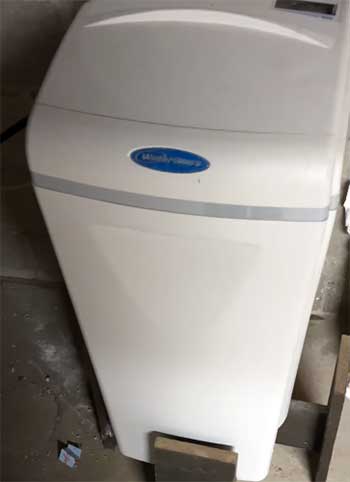
When I moved into my new home, I noticed the water felt… off.
My skin was dry, my laundry was stiff, and my coffee maker had this weird white buildup.
A quick water test confirmed my suspicions: hard water, packed with calcium and magnesium, was wreaking havoc.
I’d heard about water softeners but wasn’t sure where to start.
After some research, I landed on the WaterBoss 700, a compact unit that promised to tackle my water issues without breaking the bank.
At around $400, it felt like a steal compared to pricier models.
Installation was my first pleasant surprise. I’m no plumber, but the WaterBoss came with clear instructions and a video tutorial that made the process manageable. I set it up in my garage in a few hours, connecting it to the main water line.
The unit’s small footprint was a lifesaver since my space is tight. Once it was running, I noticed a difference almost immediately. My shower water felt silkier, and my hair wasn’t as frizzy. Dishes came out of the dishwasher spotless, and my clothes felt softer than ever.
The WaterBoss 700’s regeneration cycle is another standout. It takes about 20 minutes and uses minimal water and salt—16 gallons and 2.5 pounds per cycle. I barely notice when it’s running, and the digital control panel lets me tweak settings like water hardness with ease.
Over time, I’ve saved on soap and detergent because soft water lathers so much better. My appliances, like the water heater, seem to be holding up well, free from the scale buildup that plagued my old place.
Sure, I’ve had to keep an eye on the salt levels, but that’s a small price to pay for the benefits.
One hiccup?
I had a minor leak during setup, likely due to my amateur plumbing skills. A quick check and some tightening fixed it, but it taught me to double-check connections. Overall, my experience with the WaterBoss has been stellar.
It’s not perfect, but it’s reliable, efficient, and has made my home feel like a spa. If you’re on the fence, I’m here to tell you: this thing delivers.
What Makes WaterBoss Stand Out?
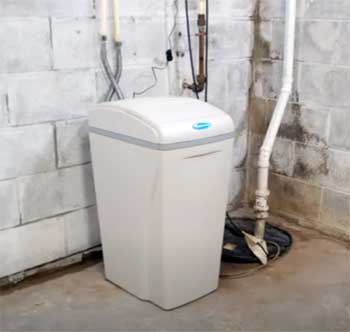
Let’s talk about why WaterBoss caught my eye in the first place.
WaterBoss, manufactured in the USA by a company with over 30 years of water treatment experience, specializes in compact, efficient water softeners designed for real homes.
Their systems use ion exchange technology, swapping hard minerals like calcium and magnesium for sodium to deliver soft water throughout your house.
Models like the 700, 900, and 950 cater to different household sizes and water hardness levels, with grain capacities ranging from 22,000 to 36,400.
What sets them apart is their focus on simplicity—think fast regeneration, built-in sediment filters, and user-friendly controls. They’re not just softeners; they’re problem-solvers for anyone dealing with hard water’s pesky side effects.
Pros of The WaterBoss Water Softener
- Compact Design Saves Space
One of the biggest wins for me is the WaterBoss’s size. Unlike those bulky dual-tank systems that eat up half your basement, this unit is sleek and compact.
My WaterBoss 700 measures just 14.75 x 18.75 x 25.75 inches, fitting snugly in my garage corner. If you’re in a condo or a small home, this is a godsend. It doesn’t sacrifice power for size, either—it handles my household’s water needs without a hitch.
- Fast and Efficient Regeneration
The regeneration process is where WaterBoss shines. My unit regenerates in about 20 minutes, using only 16 gallons of water and 2.5 pounds of salt. Compare that to other brands that can guzzle 40 gallons or more, and you’re saving resources and money.
The demand-based regeneration means it only kicks in when needed, so you’re not wasting water or salt during low-usage times. It’s eco-friendly and wallet-friendly, which I love.
- Easy Installation for DIYers
I was nervous about installing a water softener myself, but Water >>>>Boss made it approachable. The kit includes everything you need, and their online video walked me through each step.
The single-tank design means no fussing with a separate brine tank, which cuts down on complexity. If you’ve got basic plumbing skills, you can save hundreds by skipping a professional. Even if you hire someone, the straightforward setup keeps labor costs low.
- Built-In Sediment Filter
The WaterBoss doesn’t just soften water; it tackles sediment, too. Its 20-micron filter catches sand, silt, and rust before they hit the softening chamber, protecting the system and your plumbing.
In my case, it’s reduced the grit I used to find in my faucets. This feature extends the unit’s lifespan and keeps maintenance simple, since the filter is self-cleaning and doesn’t need replacing.
- Cost-Effective Performance
At $400 for the 700 model, WaterBoss is a budget-friendly option that doesn’t skimp on quality. It’s NSF Standard 44 certified, meaning it’s been tested for hardness reduction and safety.
The low salt and water usage keeps operating costs down, and I’ve noticed savings on soap, shampoo, and even appliance repairs. For the price, it’s hard to beat the value you get.
Cons of The WaterBoss Water Softener
- Mixed Reliability Reports
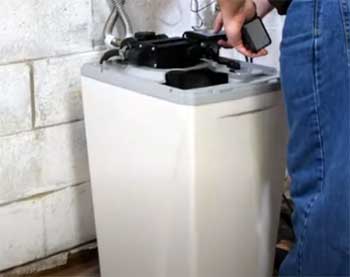
While my WaterBoss has been solid, I’ve read reviews from others who’ve had issues.
Some folks report leaks or faulty units, especially with the 900 model.
My leak was minor and user-error related, but stories of floods or dysfunctional systems give me pause.
It seems quality control can be hit-or-miss, so you’ll want to monitor your unit closely after installation.
The 5-year parts warranty and 10-year tank warranty offer some peace of mind, but dealing with repairs can be a hassle.
- Limited Capacity for Large Households
The WaterBoss 700 works great for my small family, but if you’ve got a big household—say, five or more people—you might find its 22,000-grain capacity lacking.
The 900 model, with 36,400 grains, is better for larger homes, but even then, it may need to regenerate more often if your water is super hard. If you’re running multiple showers and appliances at once, you could notice a dip in performance.
- Installation Challenges for Novices
While I found the installation doable, it’s not foolproof. If you’re not handy with a wrench, the process might feel overwhelming. A few reviewers mentioned issues like leaks from improper setup, which aligns with my own experience.
Hiring a plumber can add $500-$1,000 to the cost, which eats into the affordability factor. If you’re not confident, budget for professional help to avoid headaches.
- Salt and Water Usage Concerns
Yes, the WaterBoss is efficient compared to competitors, but it still uses salt and water during regeneration. If you’re in an area with water restrictions or high salt costs, this could be a drawback.
My unit’s 2.5 pounds of salt per cycle adds up over time, and while it’s less than some brands, it’s not zero. Salt-free systems might be worth considering if you’re eco-conscious or sodium-sensitive.
Maintenance Tips For Your WaterBoss Water Softener
- Check Salt Levels Regularly
Keeping your brine tank stocked is key to smooth operation. I check mine every couple of weeks to ensure it’s at least half-full with salt pellets. A 40-pound bag lasts me about a month, costing around $10.
If the salt level drops too low, the system can’t regenerate properly, and you’ll notice hard water creeping back. Set a reminder on your phone to stay on top of it.
- Clean the Brine Tank Annually
Once a year, I give the brine tank a good scrub to prevent salt buildup or mold. It’s a bit messy, but worth it. Turn off the water, scoop out any remaining salt, and rinse the tank with warm water.
I use a mild dish soap to clean any gunk, then dry it thoroughly before refilling. This keeps the system running efficiently and avoids funky odors.
- Use a Cleaning Solution
WaterBoss recommends adding a cleaning solution every three to four months to prevent mold and mildew in the resin bed. I picked up a bottle of their cleaner for about $15, and it’s easy to pour in during a regeneration cycle.
It’s an extra step, but it takes five minutes and helps extend the unit’s lifespan. Don’t skip this if you want your softener to last 10-15 years.
- Monitor for Leaks
After my initial leak scare, I make it a habit to check the connections and valves monthly. Look for drips or puddles around the unit, especially after regeneration.
Tighten any loose fittings with a wrench, but don’t overdo it—you don’t want to crack the plastic. Catching issues early can save you from costly repairs or water damage.
- Test Your Water Periodically
I bought a $10 water hardness test kit to check my water every few months. It’s a simple strip test that confirms the softener is doing its job. If you notice hard water symptoms—like spots on dishes or dry skin—test right away.
It could mean the settings need tweaking or the resin bed needs attention. Staying proactive keeps your water soft and your system healthy.
Comparing WaterBoss To Other Brands
Let’s see how the WaterBoss water softener stacks up against some heavy hitters in the market: the Hydrotech 765, Westinghouse, and Morton 45000. I’ve used my WaterBoss 700 for a while now, so I’m excited to break down these comparisons in a head-to-head style.
Each brand brings something unique, but I’ll share what makes WaterBoss shine (or not) for my small household’s needs. Here’s the scoop on how they compare.
- WaterBoss Vs. Hydrotech 765
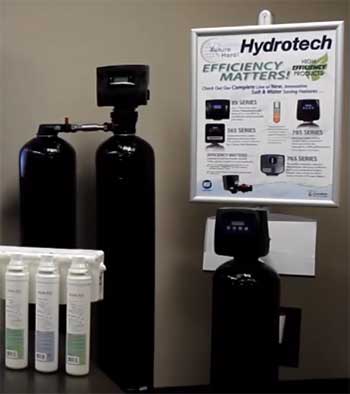
The Hydrotech 765 is a solid contender, known for its efficiency and tech-forward features.
It’s got a 32,000-grain capacity, which is higher than my WaterBoss 700’s 22,000 grains, making it better suited for medium to large households.
Its upflow regeneration is a big draw, using up to 50% less salt and 28% less water than traditional systems, which is slightly more efficient than WaterBoss’s 2.5 pounds of salt and 16 gallons per cycle.
The Hydrotech’s LCD display is user-friendly, showing time, regeneration mode, and remaining gallons, and its adjustable cycle times make setup a breeze. It’s NSF-certified, like WaterBoss, ensuring reliable hardness reduction.
But here’s the catch: Hydrotech units, priced around $1,050, are pricier than my $400 WaterBoss. They’re also sold exclusively through dealers, which can complicate purchasing and bump up costs with professional installation.
WaterBoss’s compact, single-tank design (14.75 x 18.75 x 25.75 inches) fits my tight garage better than Hydrotech’s bulkier setup. Plus, WaterBoss’s built-in 20-micron sediment filter handles dirt and rust without extra equipment, while Hydrotech’s basic models lack integrated filtration, potentially requiring a separate filter costing $500-$1,000 more.
For my small family with 15 GPG water, WaterBoss’s affordability and simplicity win, but Hydrotech’s higher capacity and efficiency make it a strong pick for bigger homes.
- WaterBoss Vs. Westinghouse Water Softener
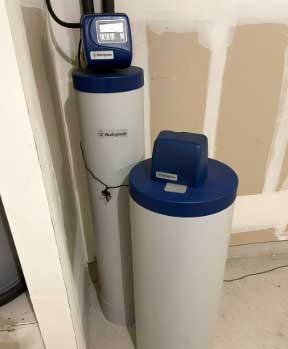
Westinghouse water softeners, like their 30,000-grain model, aim for versatility with a focus on eco-friendly operation.
They use demand-initiated regeneration, similar to WaterBoss, to optimize salt and water use.robot
However, Westinghouse softeners start around $700, nearly double my WaterBoss’s cost.
They lack the built-in sediment filter that I love in WaterBoss, which means you might need an additional filtration system for well water with iron or sediment—adding to the expense.
Westinghouse’s regeneration uses about 20 gallons of water and 3 pounds of salt, less efficient than WaterBoss’s 16 gallons and 2.5 pounds.
While Westinghouse offers a 7-year warranty on parts (versus WaterBoss’s 5-year parts and 10-year tank), its higher upfront cost and lack of integrated filtration make it less appealing for my budget-conscious setup.
If you’ve got moderately hard water and want a straightforward, cost-effective solution, WaterBoss edges out Westinghouse for value and convenience.
- WaterBoss Vs. Morton 45000
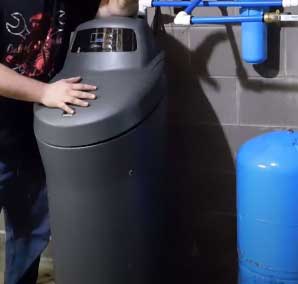
The Morton 45000 is a beast for large households, with a 45,000-grain capacity that dwarfs WaterBoss 700’s 22,000 grains.
It can tackle 120 GPG of hardness and 12 ppm of clear water iron, ideal for very hard water or well systems.
Morton’s “Look Ahead” technology monitors usage to minimize salt and water waste, using about 25 gallons and 3.5 pounds of salt per cycle—less efficient than WaterBoss’s specs.
Its 210-pound salt capacity means fewer refills, and the commercial-grade valve supports high flow rates (up to 11 GPM). The injection-molded cabinet is UV-protected, allowing outdoor installation, and comes with a 10-year tank warranty, matching WaterBoss.
Priced at around $800-$1,000, Morton is costlier than WaterBoss and requires more space due to its larger footprint. Installation can be trickier, often needing professional help, which adds $500-$1,000, unlike WaterBoss’s DIY-friendly setup.
Morton’s control panel displays flow rate and low-salt alerts, but it lacks WaterBoss’s built-in sediment filter, so you might need extra equipment for sediment-heavy water. For my small home, Morton’s capacity feels like overkill, and the higher cost and maintenance demands don’t justify the upgrade.
WaterBoss’s compact size, lower price, and all-in-one filtration make it my go-to, though Morton’s a champ for big families or extreme water hardness.
Frequently Asked Questions (FAQ)
From my experience, WaterBoss water softeners are a solid choice for small to medium households. They’re affordable, compact, and efficient, delivering soft water that improves skin, laundry, and appliance longevity. The 700 and 950 models handle moderate to hard water (up to 70 GPG) well, with fast regeneration and low resource use. However, some users report leaks or reliability issues, particularly with the 900 model. If you monitor installation and maintenance closely, WaterBoss offers great value. For larger homes or very hard water, you might need a higher-capacity brand like Fleck or Kinetico.
Reliability depends on your needs, but Kinetico often tops the list for its durable, non-electric dual-tank systems that provide uninterrupted soft water. Fleck is another standout for its customizable, long-lasting units, especially the 5600 SXT. SpringWell’s SS4 is praised for its high capacity and lifetime warranty. WaterBoss, while reliable for smaller homes, has mixed reviews due to occasional leaks. I’d lean toward Kinetico for bulletproof performance, but WaterBoss is plenty reliable for budget-conscious folks like me with moderate water hardness.
WaterBoss water softeners typically last 10-15 years with proper maintenance. My 700 model is still going strong, and regular tasks like cleaning the brine tank and using a resin cleaner help extend its life. The resin bed can last 5-10 years, depending on water quality, and moving parts like valves may need replacement after several years. The 10-year tank warranty and 5-year parts warranty offer decent protection. Hard water with high iron or chlorine can shorten lifespan, so test your water and stay on top of upkeep.
WaterBoss water softeners are manufactured by WaterBoss, a U.S.-based company with over 30 years of experience in water treatment. They’re known for producing compact, efficient softeners and filters designed for residential use. The company focuses on user-friendly systems with features like built-in sediment filters and fast regeneration. All WaterBoss models, including the 700, 900, and 950, are made in the USA, which gives me confidence in their quality control, despite some user-reported issues.
Conclusion: Your Path To Softer Water Starts Here
If hard water’s got you down, the WaterBoss water softener is your ticket to smoother skin, cleaner dishes, and longer-lasting appliances. It’s compact, affordable, and easy to use, making it a no-brainer for small to medium homes.
I’ve loved the difference it’s made in my life, and I’m confident you will too. Don’t let scale and dry skin win—grab a WaterBoss and feel the softness for yourself.
